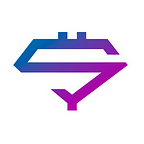Candlestick Charts 101
Professional traders know that technical analysis (TA) isn’t the only tool needed for success. They also admit that it’s vital to know it. Mainly, TA skills include chart analysis, trend spotting, and appropriate trading decisions. They boost risk management and general skills, too. In this case, understanding candlesticks is essential for any trader or investor regardless of the chosen style.
In this simple guide, Superorder helps to understand how candlesticks work and how to read the charts. Learn crypto with us!
A Portion of History
As long as we’re talking about Japanese candlesticks here, mostly, let’s learn how they were invented. It’s said that the first charts of this type were created by a Japanese trader Munehisa Homma in the 18th century. Steve Nison described them in his book, introducing the idea to the Western investors. Nison also said that his research showed that modern-like candles originated a bit later, in the late 1800s.
Japanese Candlesticks
These charts are the most common. We bet that you’ve seen them and, most likely, used them for trading. In a nutshell, a candlestick chart is a financial graph that shows how an asset’s price is changing over time. Such charts consist of candles, each based on a specific timeframe. For instance, there are 1D charts where each candlestick represents one trading day. There are also charts for hours, minutes, seconds, weeks, months, etc.
Virtually, each candlestick features four values known as OHLC:
- Open (O). The first price recorded during the target timeframe.
- High (H). The highest price recorded during the target timeframe.
- Low (L). The lowest price recorded during the target timeframe.
- Close (C). The last price recorded during the target timeframe.
Each candle also has a body (the distance between O and C), two wicks (the distance between O/C and H/L), and a range (the distance between H and L).
Traders use red/green and black/hollow schemes to read these charts. Usually, when a candle’s body is red, it means that the price moved down so O was higher than C for this particular timeframe like a day or an hour. Alternatively, a green body means that the rate increased and O was lower than C.
You can compare the styles below but remember that you can use any suitable colors. Superorder and TradingView support different style options.
Heikin-Ashi Candlesticks
Translated from Japanese, Heikin-Ashi means an average bar. This type is highly similar to Japanese candlesticks. It also features candles that represent a given timeframe, the OHLC structure, and the trend vision. Still, there’s a major difference in formulas used for values. According to the name, these candles are based on average prices.
The modified formulas for OHLC looks as follows:
- Open (O): (Japanese O + H + L + C) / 4.
- High (H): the highest number of Japanese H, C, and Heikin-Ashi O.
- Low (L): the lowest number of Japanese L, C, and Heikin-Ashi O.
- Close (C): (previous Heikin-Ashi O + previous Heikin-Ashi C) / 2.
As a result, these modified candles represent smoother movements and remove trading noise. Using them, investors can identify trends better. However, Heikin-Ashi charts feature slower pattern development and may lose rate gaps. That’s why it’s better to use two candlestick types combined.
Pros & Cons of Charts
Candlesticks are considered more informative than lines and bars. They show how sellers and buyers compete during certain periods. For instance, bodies show how significant the pressure of market players is. The bigger each candle is, the more aggressive bulls or bears are. In this case, candlestick charts are indispensable for trend analysis.
Simultaneously, these tools focus on general info only and don’t provide details. It’s evident that candlesticks don’t show exact actions during each trading session — they just reveal limit values. Moreover, they tell the numbers of highs and lows but don’t tell when these actions occur exactly during the session.
Anyways, candles are perfect for TA. You can find some examples of candle patterns revealed by Investopedia. The project focuses on stocks and fiat currencies but pictures can be used for crypto trading, too. Here are a few examples:
- Engulfing. A big subsequent body is completely engulfing a small previous candle of another color. It shows a strong trend reversal.
- Harami. A small subsequent body is completely inside a big previous body of another color. It shows a potential reversal but requires confirmation.
- Three. Three subsequent small bodies of one color are located between two big bodies of another color. It shows the power of the existing trend.
Final Words
While technical analysis is important for any trader, you shouldn’t forget about fundamentals, too. Japanese candlesticks and Heikin-Ashi alternatives work wonderfully when you want to understand the market situation. They let traders dive deep into timeframes, zooming from months to seconds. Nevertheless, they can’t be the only tools in your arsenal. Never stop learning TA and FA things to master crypto trading!
